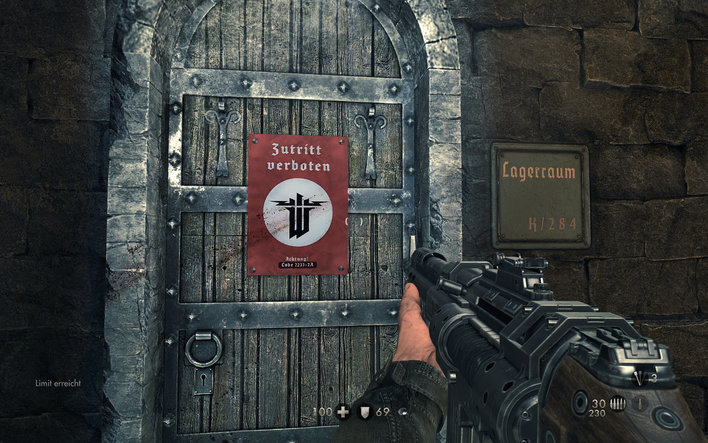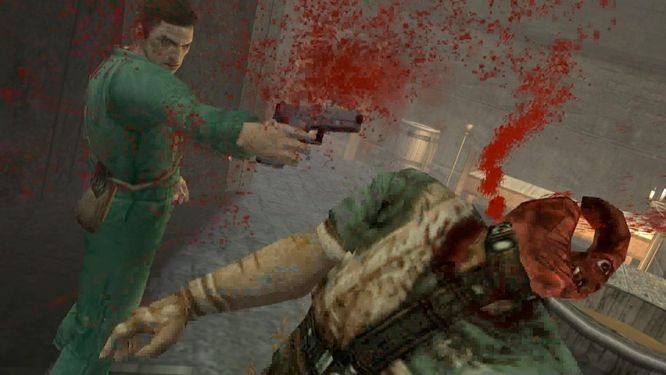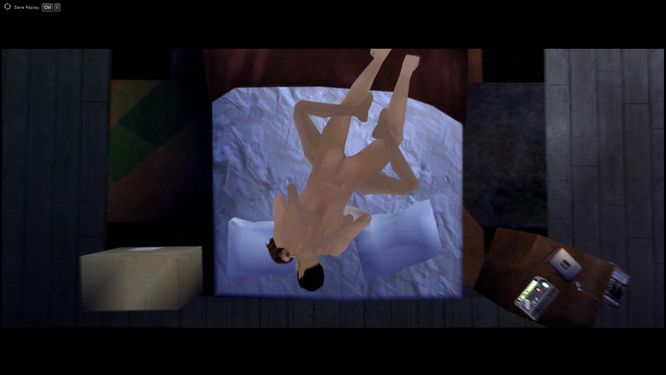When it comes to something like rating a game's content, you'd think that age ratings would be fairly constant all around the world. After all, as ratings simply give guidance (legal or otherwise) as to the age-appropriateness of the content you'll find in a game, you'd expect what's deemed "OK" or otherwise for children of a certain age would be at least similar, no matter where you live. But you'd be wrong. While the games themselves may be exactly the same, the way we determine what's age appropriate or not actually varies hugely by territory, in many interesting ways.
For example, while America tends to get much more concerned over sex or a flash of pants than it does about violence, the trend is reversed here in Blighty (and mostly in the rest of Europe), where we're a lot less prudish about sex, but a lot more concerned about graphic violence. Japan, meanwhile, is sometimes a bit iffy about blood, but is A-OK with scantily clad teenage girls - and as such, many games often end up with female characters having their ages hiked up a few years for their eventual release in the West.
Either way, it's a funny old world out there - and as such, we thought we'd take you on a trip around the globe, by way of age ratings.
UK
What better place to start than the glorious island of tea and biscuits that we call home. As many of you are likely aware, the UK uses the PEGI rating system, which stands for 'Pan European Game Information' - a ratings system that theoretically applies across the whole of Europe, too, although like many European rules, different countries have vastly different takes on how to treat the PEGI ratings. And Germany does everything totally different to everywhere else.
Of all 41 countries that recognise PEGI, only a handful give PEGI any form of legal recognition, and it's legally enforceable in even fewer. In the UK, a retailer can be sued for selling a game rated PEGI 12, 16 or 18 to a child under that age, whereas that same child could walk into a shop in Sweden, Italy or Belgium, and buy the game, no questions asked - at least, in theory.
Splitting games into five different age categories, the system divides games based on content, and what is considered suitable for children of various ages. Like other systems, PEGI offers no judgement on how tricky or complex a game is - for that, you'll want our handy EPAL ratings.
For a detailed run down of each PEGI level and what it means, (with handy examples), be sure to check out our guide: PEGI: Video game age ratings explained
In years gone by, the UK used a different rating system to rate its games, relying on the familiar BBFC ratings that are found on films. While the ratings are no longer in use, you can still find them on some older boxes. Seemingly not as harsh as PEGI, at one point, the two ratings schemes were actually both operating at the same time, leading to some often contrasting advice.

What age rating would you give this scene from Mass Effect?
For example, Mass Effect, a space-age world-saving adventure, got a BBFC 12 for "moderate violence and one moderate sex scene", but got smacked with the highest PEGI rating of 18, for what it described as extreme and realistic violence, on top of the aforementioned sex.
Germany
One country who prefers to keep their own rating system rather than succumb to our PEGI overlords is Germany, who use something called USK instead. Represented by a diamond on a game's packing, USK is an abbreviation for the equally catchy Unterhaltungssoftware Selbstkontrolle - which literally translates as entertainment software self regulation.
The USK rating label lets parents know that the game inside the packaging complies with both the German Children and Young Persons Protection Act and the Youth Media Protection State Agreement, which safeguard the health and wellbeing of liebe Kinder everywhere. Boasting it has the "strictest age classification rules in the world" the USK system divides all digital media into five age-restricted categories - and it's illegal to sell them to anyone under the age shown on the box.
Of course, the decision about what media kids have access to ultimately falls to the parent, and you won't get arrested for letting little Hans loose with a copy of GTA you already own. As with PEGI, USK ratings are based solely on the content of the games, and not on how difficult it is to play - however, USK muddy things a bit by talking about such things in their descriptors on their website.
-
USK 0: Approved without age restriction
The most family-friendly level, games with a USK 0 are generally aimed at little ones and pose no real risks at all - happy, colourful and inoffensive. -
USK 6: Approved for children aged 6 and above
This category of games are likely similar to USK 0, only "more exciting and competitive", with occasional scary moments and potential cartoon and fantasy violence. More unusually, mild cursing and subtle innuendo may also be present. -
USK 12: Approved for children aged 12 and above
The description for this rating mentions that "hand-eye coordination requirements are greater" for these games, even though a USK rating doesn't actually have anything to do with how difficult a game is to play. Combat scenes are more realistic and violent, but still recognisably fictitious. Some explicit language and sexual content may be included too. -
USK 16: Approved for children aged 16 and above
For this category, a game's setting may be more realistic, and frequently include acts of violence, armed combat and military missions, or shock and horror. Explicit language is more consistent, and erotic or sexual elements may be present. -
USK 18: Approved for children aged 18 and above
These games may include explicit violence, dark and threatening atmospheres, unquestioned drug use and anything else "considered detrimental to young persons".
In Germany, games can also be refused a USK rating if they're considered too extreme - but that doesn't mean they can't be sold, full stop. The Department for Media Harmful to Young Persons, or BPjM for short, keeps a list of such games, affectionately known as 'the index', and anything on said list cannot be advertised, reviewed in magazines or put on display in stores. However, you can still buy the games "unter der Ladentheke" (lit. 'under the desk') by request, provided you can prove you're not a minor.
The guidelines may be a bit vague, but Germany is well-known for being strict with it's age ratings. For obvious reasons, they're exceedingly tough on hate crimes and certain symbols, particularly those associated with Nazi Germany - making it particularly tricky for games set during WW2. Most tend to switch any swastikas out for iron crosses, which are considered much less distasteful. USK ratings are also much harder on extreme blood and gore. It's fairly common to see games released in an alternate German version, with questionable elements stripped out.

In German versions of games set in WW2, like Wolfenstein, Swastikas are often swapped for a different logo
North America
Thanks to annual industry trade show E3, the games announcement extravaganza that takes place every summer in Los Angeles, we're already somewhat familiar with America's ESRB rating system. Standing for the Entertainment Software Rating Board, these ratings aren't actually mandatory for all games, although big stores like Target and Wal-Mart will not stock games that haven't been rated by the ESRB.
Interestingly, due to the American First Amendment, ESRB ratings aren't actually legally enforceable, either - to prevent the sale of a game would be a violation of the amendment on freedom of speech. This means that theoretically little six year old Junior could buy himself GTA without an adult present, although in practice the vast majority of shops will restrict the sale of M and AO rated games to consumers who are old enough.
The ESRB ratings are:
-
EC: Early Childhood
Suitable for children aged 3 and up, these games do not contain anything considered unsuitable for youngsters. -
E: Everyone
For those aged 6 and over, these games contain comic mischief, minimal violence or infrequent mild language. -
E10+: Everyone 10+
With mild violence, mild language and comic mischief, these games are intended for those 10 and up. -
T: Teen
For children aged 13 and up, a T-rated game may have moderate violence, strong language or some suggestive themes. -
M: Mature
Containing strong violence, strong language and/or "mature themes" these games are intended for those over 17 only. -
AO: Adults Only
Strictly for over 18s, these games may contain graphic depictions of sex and violence.
The final, AO rating is basically a death-knell for any game, as these games cannot be published on major consoles, and are generally not stocked by most stores. Only three games have ever been given an AO rating for extreme violence, one of which was the uncut version of Hillary Clinton shocking torture sim Manhunt 2.

Manhunt 2 was incredibly, excessively gory.
Most AO games tend to be of the sexually explicit, pornographic type. One such game threatened with the dreaded AO rating was Indigo Prophecy, known elsewhere as Fahrenheit - a point-and-click style thriller set to the tune of Theory of a Deadman that was mostly above board, but also contained a sex scene that was somewhat… interactive. The title, made by French developers Quantic Dream, was tame enough it had only received a 16 rating in the UK and most other countries - but in America, the developers were forced to cut the scene, or else face being essentially withdrawn from sale, releasing a stripped down M-rated game instead.

If they'd left this in the US release, the game would have been banned from sale.
Japan
Ah, Japan. Land of the rising sun, used knickers vending machines and giant robots. To the outside observer, Japan may seem somewhat lax when it comes to sexual content, particularly when it involves what appear to us to be barely legal 'moe' girls, thanks to vastly different ages of consent between the west and Japan. However, in Japan, there's a definite divide between 'hinting' at sexual content, a la underwear shots and badly placed bananas, and more overt sex scenes or nudity, with the latter likely to be heavily censored.
A prime example comes in the form of interactive drama Heavy Rain, which saw camera angles totally changed during shower scenes to obscure main characters Ethan's backside and Madison's rear end and breasts, both in full view in both the European and American versions. Likewise, a sex scene between the pair is largely cut out, fading to black after the initial kiss and resuming with them cuddling in underwear afterwards - removing the interactive undressing and canoodling totally. Blood, guts and gore can also be touchy subjects, with high-profile titles such as Uncharted totally devoid of blood, whilst Resident Evil 5 had to cut away from any chainsaw-related deaths because they were deemed to grisly to show.

Clever camera angles keeps things above board in the Japanese Heavy Rain
Japan uses its own CERO rating system, which stands for the Computer Entertainment Rating Organisation, which classifies games into five different age categories:
-
A: All ages
Content is suitable for all ages, and there's nothing inside that should offend children or their parents. -
B: Ages 12 and up
May contain mild sexual content, some violence or an infrequent use of bad language. -
C: Ages 15 and up
Could contain moderate sexual content, heavier violence or more frequent swearing. -
D: Ages 17 and up
Contains some adult material, such as strong sexual content, partial nudity, intense violence with blood and gore or frequent strong bad language. -
Z: Ages 18 and up
Adult content, with prolonged scenes of bloody, gory violence, sexual content or nudity or very strong bad language.
Japanese games not rated by CERO may fall under a second rating system if deemed too controversial for a Z rating. For sexually explicit or erotic games (known as 'eroge' for short), such ratings are deferred to a separate organisation, the EOCS, or Ethics Organisation of Computer Software, which rates adult software specifically for those deemed to be sexually explicit - such as the infamous RapeLay, which… well, you can probably tell from the name what's involved, really. These ratings have two different flavours, although precisely what differentiates the two, we're not too sure:
-
EOCS R: Suitable for 15+ only.
-
EOCS 18: Suitable for 18 and over only.
Australia
The ratings system in Australia differs a little from the rest of the world, in that the Australian Classification Board rates not only games, but films too, under the exact same criteria.
-
G: General
Suitable for everyone, G-classified games contain nothing untoward, with very mild, infrequent language, no frightening scenes with low threat throughout. Any sexual activity, nudity or drug use may only be vaguely implied or verbally referenced. Bad language is very mild and infrequent. -
PG: Parental Guidance
Classed as "mild impact", PG games may contain content children could find confusing or upsetting. Violence is mild and infrequent, scenes may be slightly scary at times and sex, nudity and drug use is discretely implied if at all present. Bad language is mild and infrequent. -
M: Mature
Recommended for teens over 15, Mature games can include moderate violence or nudity that could have a "moderate impact" on the player. Sexual content is brief and mild, whilst bad language can crop up from time to time. -
MA15+: Mature Accompanied
With implied sex scenes and drug use, the content of these games is classed as "strong in impact", and are strictly for those 15 and over. Realistic violence is permitted, although strong and bloody violence should be infrequent, while bad language, provided it's not classed as "exploitative" is permitted. -
R18+: Restricted
Content with is "high in impact", these games are not suitable for those under the age of 18. Violence can be realistic and explicit, while sexual activities can be realistically simulated provided they are not depicting any actual acts. Bad language meanwhile is largely unrestricted.
The first three ratings - G, PG and M - are technically all advisable, with children able to purchase and play games above their age at their parent's discretion. Both MA15+ and R18+ are legally binding however, and can only be sold to those able to prove they are above the age shown on the box. It's also possible for the Australian Classification Board to refuse to rate a game, deeming it too extreme, which effectively blocks it from sale in the country full stop, making it illegal to sell, advertise or even import into the country, carrying a fine of $275,000 or ten years jail time if found out.
Australia's classifications are generally viewed as among the most conservative of the lot, with many games being altered in some way, or downright banned from coming out in the country. Anything considered too violent or disturbing, such as the torture sim Manhunt from earlier, tends to be refused ratings, as does anything that is seen as glamourising drugs or sexual violence by linking it with "incentives and rewards" - which has lead to a bit of a troubled past with gangsta thriller Grand Theft Auto, mostly down to it's prostitutes and the potential for violence there.
-------------------------
So there you have it - a brief look at some of the biggest games rating organisations in the world. What's interesting is how opinions can differ from country to country, even in just the English speaking world; the UK and the rest of Europe (particularly Germany) have less issues with sex and nudity, taking a harder line on violence instead , whereas, as far as America is concerned, anything goes so long as everyone keeps their unmentionables to themselves. When it comes to the world of game age ratings, there really is no "normal" - everything changes depending on where you're from.












